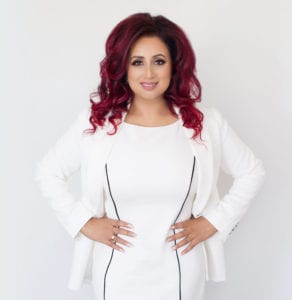Raj Girn: The theme in this week’s The Transform Your Confidence Show, is Branding and Marketing and the series is entitled: “How To Incorporate Effective Brand Strategy In Building A Successful Ecommerce Business!” My guest is branding and ecommerce expert and the founder of eBrandBuilders, Neil Verma.
Here is Part One of our conversation:

Raj Girn: Neal, what an absolute pleasure I’ve actually been waiting for this particular episode to have you on to talk about the world of ecommerce. It’s such a behemoth world. A lot of people are excited about it. There’s a lot of wonderful things that are happening in that space and happening very quickly, especially with technological advancements that are really being factored into the growth of that world. And also coupled with the fact that we’re living in this world of the pandemic where a lot of businesses have no choice but to pivot online. They are going from a situation of being brick and mortar to having to figure out the landscape of having an online virtual store. So there’s a lot for us to talk about.
I want to do something a little different than I normally do with this particular show. I want to kind of dive parallelly a little bit into your journey with ecommerce and from that garner some insights for our audience in terms of what that world is all about. What are some of the things that they should be looking at specifically from the branding perspective? Because that’s the area that you come to it from. And the reason I want to do that is a lot of people kind of still don’t understand the importance of the branding strategy piece when it comes to building out businesses, especially building up businesses online. So let me start at the beginning. First of all, welcome to the show and thank you for agreeing to come on.
Neil Verma: Well, thanks very much for having me. And it’s a pleasure to be on here and more so for reconnecting, because as we were talking before we started that, it’s been a while since we reconnected and it was 10, 15 years ago. So we’re going to date ourselves here, but that’s okay. So as we get a pleasure to be here.
I’m so happy as well. And it really is a small world when you’re based in Toronto and you come from the business world. So I’m so happy that finally I get to have you on one of my shows and I can’t think of a better subject matter or even a better show to have you on with the expertise that you have. So are you ready to dive right in?
I think we should, yeah.
OK, wonderful. So, Neil, you started your journey with branding as a corporate executive. So what specifically made you decide that you wanted to move into the entrepreneurial space? What was that for you?
I think that certainly I was in the corporate space, as we talked about, for more than 10 years. And it was a classic case of seeking freedom. Corporate definitely gave me the fundamentals that we’re looking for once we leave our education and once you leave our university and colleges. It gives you that stability and security of developing very high level of skills that comes with working with different products, different organizations. Or you obviously gather with cross-functional experience that you’re looking for. But then you’re looking to build something on your own and to be able to run with it and not really get bogged down by democracy. And you talk about at the start of this conversation that we are living in a tech space and we’re living such exciting times right now.
Obviously, by the current situation, it’s absolutely the best time to be an entrepreneur. And technology has made this a level playing field. The Internet has democratized the tools that are required to start a business, the short and David versus Goliath. It’s actually not that big of a deal anymore. It’s not a big battle at all. And upstarts are making as much noise as possible as much as the established players. And they’re all on equal footing. And if I was working for one of the big banks right now or one of the major institutions or legacy brands, I’d be very conscious of what’s going on outside of there. So loving entrepreneurship. I just wish I had taken the plunge much more early on in my career.
That actually sets us up nicely, Neil, for us talking about what this opportunity can look like online. So let me ask you this: What fundamentally is the difference between corporate branding? Because I want to kind of focus on how important branding is in this entire game online and ecommerce branding. So let me ask you that again. What fundamentally is the difference between corporate branding and ecommerce branding that you feel is little known to people?
Sure. Interesting question. And I think I rested a fair bit with this once I transitioned from my corporate years to my ecommerce years. The basic fundamental laws of branding still apply to both. And it should do that because branding doesn’t change if you’re moving or transitioning to career paths. Branding is still an inside process and it should always start from the core and emancipate to the rest of the organization. And when I mean core, it starts from your why, your brand purpose, your reason for existence. Branding is still emotional and you still need to appeal to the hearts and minds of your customers. And branding still goes beyond your product. You truly need to understand what you’re selling. But with ecommerce being more of a recent phenomenon, with Jeff Bezos selling his first book in 1995, it’s only been 26 years now.
“Branding doesn’t change if you’re moving or transitioning career paths. Branding is still an inside process and it should always start from the core and emancipate to the rest of the organization.” ~Neil Verma
Customer centricity as part of ecommerce has taken on a totally different meaning, and that has changed the expectations of the consumer. The consumer is way more discerning. The customer has way more choices and now the customer is actually building a brand. And that’s where the differences in branding lie between the traditional legacy branding as well as the ecommerce customer centric branding. Sure, it still applies to the traditional institutions, but largely in the last 20, 25 years, the pace with which new brands are popping up and all the brands are being upstaged is massive right now. So on one hand, you will see in a company like Argos that started in 2014, so roughly around six, seven years, and it’s now ready to take on Nike and Adidas. Dollar Shave Club, which with one viral video — I’m sure you might have seen that video, Raj — it gave massive prominence and was acquired by Unilever for $1 billion. Native was another startup. It started with one single product — deodorant — and was acquired by P&G for $100 million. I’m sure they’re being bought by these CPG companies to diversify their revenue base and gain market share.
But largely they want to tap into a base and I mean a team and a marketing system so that they can figure out how to build online businesses. And these operational structures and mindsets of these older organizations just don’t allow them to tap into how we actually build brands. And that’s where the difference is. Running brand development in this new era requires a completely different approach. You have to understand the problems of the customer. You have to strike an emotional chord and then you have to figure out how are you going to acquire them with the completely new channels that were never available before.
And this is the opportunity right Neil? This is the opportunity for the everyday person to be able to hone in on how they can go about surrounding kind of the idea behind what they’re creating with their business around some of these things that you’re talking about? So let me ask you this: You say that branding is misunderstood in ecommerce. I read somewhere where you said that. I want you to share how.
It comes from actually how marketing has transitioned over the years. So if you’d asked me this question, you’re asking me this question now, of course, pandemic. And it has clearly changed from how it was a couple of years ago, obviously, pre-pandemic. Marketing pre-pandemic was lazy. And let me explain what I mean by that. At that time we knew that an organic user is often more valuable than paid, but we still focus on paid since it’s faster and easier. And we had all these social channels that were available to us, Facebook, Google Ads, Shopping, and we tended to focus on those channels to acquire customers. And secondly, we like to convert customers in on a single touch. So as soon as we get a hold of them, we make sure that we get the sale. And this doesn’t actually relate well to long term value. And that is with which the speed with which these acquisitions allow us to acquire customers.

So building a brand in that era, and when I say era I mean two years ago, it became synonymous with customer acquisition. It became synonymous with sheer revenue numbers and they were burning cash at an unprecedented rate. So ecommerce, at that time, they started referring to branding as defined by as a logo or colours. And I can’t remember, how many times I was approached saying that you have great branding while they were looking at a website or if they’re looking at colours or if they’re looking at topography, or a logo. Or you should want to brand awareness campaign. So branding versus a form of marketing was completely separate from each other. But meanwhile, we know that branding is all encompassing. It goes beyond the logos and beyond the colours and it’s beyond the brand identity work that you do. So basically the essence of branding was lost pre-pandemic.
However, in the last two years, the cost to acquire customers has been overly expensive. And you see that with the new iPhone update where it’s asking you if you want the app to track your activity on on the browsers or not, so that certainly is going to even make it more expensive than it was. And we also see that brand building is now back at its core, and it’s the pandemic that has forced us to visit what truly is important to customers. And we’re now relegated back to the core branding fundamentals of what is the moral compass? What is a true north by which everyone knows right and wrong? And that businesses exist to create value and it does not have to be an isolated financial gain. So things of the last two years, two years have certainly changed a lot. And again, it’s a function of the pandemic where people are questioning everyone’s motive, especially financial. And secondly, the cost to our customers has dramatically increased and that has changed the game. So that’s how branding has changed within ecommerce as well.
“Brand building is now back at its core, and it’s the pandemic that has forced us to visit what truly is important to customers. And we’re now relegated back to the core branding fundamentals of what is the moral compass? What is it true north by which everyone knows right and wrong? And that businesses exist to create value and it does not have to be an isolated financial gain. ~Neil Varma
Wow. There’s so much to unpack here. It kind of warrants an entire show just to talk about that. So let me move on to ask you something else that kind of came top of mind for me. Neal, you spent a year to reverse engineer the top 200 direct to consumer brands in order to come up with a set of brand rules, which I think is absolutely genius, not only for your own journey through entrepreneurship and what that means, but also to help other brands figure out some sort of benchmarks. Since the online space has been considered the wild, wild West, how do we navigate that? So I think that what you did there is really, really fundamental and valuable for anyone that’s looking at figuring out what their brand strategy needs to be in the direct to consumer brand space. So let me ask you this: Can you share some insights on what you learned about branding through this research that everyone should know about?
Right. A bit of context here — and you alluded to that as well there, Raj, in your question itself. There was a selfish motive here and it just so happened that when I first launched the first two businesses, it was quite a learning experience for me. And it was just a case of jumping in headfirst and thinking that I have strong corporate experience. I’ve been in the game for the last 10, 12 years. I’ve got a solid educational background, marketing background. And it was a fail safe thing, but it didn’t take long for me to understand the dynamics were totally different and it was actually a good wake up call after the first two businesses. The first one lasted six months and the second one pretty much the same interval. And it was time that I decided that I’m not a quitter and I need to go back to the drawing board and start analyzing those top brands. And in my case, I analyzed the top two hundred brands to see what they were, how they were branding. And based on the research that undertook, I discovered that every element of the brand concentrated around a core principle, whether I looked at marketing, product development, operations, messaging or the customer experience at this core experience this core shined throughout.
So you start from the core and it’s almost like a thread, you can tag it along to every facet of a business and it touches every facet. And that’s why branding is so crucial. And the closer I looked, the more I realized that they weren’t achieving success by accident, they were carefully designed. And and that’s the reason why it seeps to every facet of the organization. And secondly, branding does bring clarity. Once you align on brand purpose, once you align on the core wisdom of your existing perspective, the ideal customer of the uniqueness, the messaging, the tone, the story, the channel, they all go hand in hand and they’re all in sync and they all fall in place. And that’s why a branding serves as the fundamentals. But then again, it makes the whole entire process much easier. And that’s why you recognize brands really well and you buy from an emotional reason.
Absolutely. All of the above, everything that you just said, is exactly on point. I completely agree with you. And it’s interesting because it even more emphasized the fact that if you’re not clear on what your brand strategy is, what your vision is, what your mission is, what the values of your brand are, you’re not really able to set forth what the style, the voice, the tone, the messaging in your branding needs to be. And that’s the mistake people just go straight to the communication piece without actually understanding the layers of the culture around the brand that you’re creating. And that’s a lot of what you’re saying right now, which I think is very, very fundamental. And to folks, if you’re just tuning in, this is a really important conversation that I’m having with Neil Varma, who is a brand genius, especially when it comes to the ecommerce space.

He comes from corporate and has moved over into entrepreneurship a number of years ago and has done quite a bit of deep diving in trying to understand some of the common denominators of why brands are successful in the online ecommerce space versus those brands that aren’t. And it’s very interesting because some of what you said in terms of legacy brands versus new brands online, post the legacy era, the gap between the two of them in terms of setting yourself up for success is a lot less than it’s ever been. And branding is a very key component of, obviously not the only component, because you have to have all the other ducks in a row, too. The way I look at it it’s kind of like that string or that segment that just holds up the blocks of the business that you’re creating and keeps reminding you, oh, hang on a minute, this is what our values are. This is the purpose. This is who we serve. This is why we serve them. This is why our value proposition is beneficial to ABC person.
And I think that’s the thing that you cannot ever lose sight of when you’re creating a business, because it helps you stay in line with why you are doing what you’re doing and who you’re serving and do both of those actually makes sense to be together? Oftentimes people have these great ideas, especially creatives, that I want to do this right. They haven’t really done any market research. They haven’t really thought about any of the elements and layers that it takes to actually understand what your brand strategy needs to be and what the culture and the ecosystem that you’re going to create around that both business wise and community wise. I just wanted to kind of touch base on that a little bit. And this is why I wanted to ask you this next question, Neil: What would you say through your experience are the top five rules and ecommerce business needs to dial in in order to put them on the track towards success.
Right. And you just alluded to that, Raj, in your commentary there, that you need to have your ducks in a row and the cement is the brand here. And that is the first rule that I would allude to actually, is the role of the branding of course. Customers, they’re not interested in direct sales marketing, which feels tone deaf, although it doesn’t mean they aren’t interested in buying. They just don’t want to be sold to or feel pressure. And this kills the desire to have great control over the buyer’s journey. The good news is that there’s never been a better time to leverage organic acquisition methods. Like I mentioned before, the transition from paid to organic has taken place, though it’s been a more reactive mode, but it’s still there for the better. And the story driven content marketing strategy that would accompany this organic approach would go a long way. But if your brand doesn’t have a set of values or ethos going forward, you will be invisible and you will clog up the sale channels. And when customers don’t believe in your product, they don’t have promotional relevance of that product in your life, they’re not to take the next step in that journey.
“If your brand doesn’t have a set of values or ethos going forward, you will be invisible and you will clog up the sale channels. And when customers don’t believe in your product, they don’t have promotional relevance of that product in your life, they’re not to take the next step in that journey.” ~Neil Varma
The second thing I would say is that the customer is the channel. And I recently wrote an article and printed 2021. And that was the number one point I mentioned. And what I mean by that is we all talk about omni channel. We all talk about the multichannel running as well. And you know, Raj, you are in the market space, you realize that the power of social and the power of the omni channel. It basically means that you need to be where your customers are. And that involves the marketing and selling across multiple channels. And because ecommerce operations are devoid of that and give little pause given to the brand experience. So that needs to change for sure. So I would say is that the brands need to speak up or perish. And by that I mean that they need to stand up for issues that seem relevant.
And we see that especially the last two years, we had Black Lives Matter, we had the Me Too movement. And we see the social causes and we see a lot of brands that stayed mute or decided not to speak up on issues. And now there was a recent controversy with Basecamp where they made it absolutely mandatory that the staff itself can’t can be political. Thirty per cent of their team actually left the company the very next day. So the onus is on the brands to speak up, to stand for something. And you see that done really well with Nike and Starbucks for those examples. Then I would say product differentiation that goes without saying. You definitely need some uniqueness in the product. And at the last thing I would say, is leveraging those organic acquisition methods. We have so much of so many channels at our disposal right now that you can’t keep leveraging on acquisition. The costs are through the roof and at the same time your customers can see the power of content, they can see the power of brand story and brand storytelling. And that’s what you need to leverage. Make sure you have a brand.
Absolutely. And you know, the other thing that just came into my mind, which is I guess a real fundamental of why everything that you just said there is crucial, is all all of it comes through one funnel of creating connection. What are we trying to do here? We’re trying to create connection with the right people, the people that what you’re selling is something they want but, more than that, this kind of like this holistic approach to people wanting to have more of an understanding of what you stand for. And this is, again, where the entire brand exercise comes into play.
Folks, if you’re not doing this, if you are not focusing on the importance of what your layered brand strategy is all about in terms of going to market the right way to create connections with the right people, then this is something you really need to sit with and see how you can actually do this exercise. There’s many different ways of doing it. I know that Neil, this is something that you do as well in terms of a part of what you offer up. This is something I was going to talk about a little bit later on, but I kind of feel like it makes sense for me to talk about it now for people who want support in doing the brand piece right, especially when it comes to the ecommerce space. You have a training and consulting business called eBrandBuilders. Can you tell us a little bit about that and who it’s for?

Right. So are you are you asking about the coaching program? So at eBrandBuilders we consult with entrepreneurs in different capacities. But the flagship program is eBrandcubator, and that is the structured seven-week intensive group coaching program. And it’s based on the 7 C methodology and that is the methodology that was developed post that research that I undertook with those top 200 companies that I analyzed. So out came that. I’m a structured guy, a logical guy. So that was a framework that came out of that. And that’s the methodology that is covered over a seven-week period. So it’s a very structured way to to introduce branding to our customer base, to our ecomm entrepreneurs. And we go through the 7 Cs and I can touch on it briefly if you would like to.
That would be great. I think it’s great for anyone out there who’s looking at entering into the ecommerce space or is looking to pivot. I think that this is going to be very valuable for them to see. Tapping into this program of yours is something that would be valuable to them. So I would love for you to share.
Sure. Thank you. So as we’ve said before, branding is misconstrued, branding is confusing, and branding has an emotional element to it. It’s an intangible. That’s why to put it in a framework perspective was so important so that it’s true meaning is not lost. And the fact that you are approaching it in such a manner that it follows a logical structure such that it touches every facet of your business. So what we do with that, the first C is core and that starts with what you can control and that is your internal identity and the goal of the brand. And the three elements we touch on there are your brand purpose, your values and your essence. So that drives, that is the foundation, the fundamentals, the cement, that we build on. The next phase after the core is customer. Once you define your core, that’s when we start talking about your customer. And that is done with a narrowly defined set of values, brand purpose and essence. Now that that is a stake in the ground.
But you don’t want to chase the masses here. Brands try to please everyone and end up being bland, which means they are invisible. It’s only focusing on a narrow segment of consumers that you can engage with emotionally. We talk about how it’s important for customers for brands to speak up or perish. So by that you are actually attracting the right audience, the audience that that is going to to align with your values. And that is the audience. That is the customer base that you want to go for. After customer, we move on to the third C, which is community. So you go from core to customer to community, and here you harness the power of creating a community. So you take your customer base and you amplify it by looking at a larger base of customers that share the same passion and that can generate the grassroot brand awareness that you are looking for. Once you’re done with the community aspect of it, you now focus on the fourth C, which is competition.
And this is where we build your edge. This is uniquely what you can do that no other brand can or will do. And after the competition, we then move on to the creative piece. And usually what you find, especially digital marketers, ecomm entrepreneurs, they jump to the creative section, which is never right. And you can see how many layers are required to before you actually start looking at the logo, the colors, the topography, the packaging, the naming. So we cover all of that in the print phase, which is creatives. Once you’ve done the creatives, then you focus on the content and you focus on the power of storytelling. Storytelling obviously is the best way to leverage content marketing because it’s just essential to how human beings communicate, how human beings actually relate to each other, how they grasp content, how they explore pain points and aspirations. So we do cover a lot of the storytelling, the content marketing strategy piece of it in the sixth C which is content.
“Storytelling is the best way to leverage content marketing because it’s just essential to how human beings communicate, how human beings actually relate to each other, how they grasp content, how they explore pain points and aspirations.” ~Neil Verma
And once you’ve done all the six Cs, that’s when you focus on channel, because now you really know who your customers are. You really know what your values and your brand purposes. You really know what’s unique about your product. You really know about your community. Obviously, you’ve done all the creative work, the story to tell. And now finally, you can focus on different channels. It could be earned channels, pay channels. Whatever channels you want to focus on, you have all the assets in place to be able to go to the public at large and let them know what you’re about and who is the customer base and what is your messaging. And that’s when you amplify the results paid or organic campaigns, because not all make sense. So it’s a seven Cs, seven weeks. And at the end of the seven weeks, you have a complete brand development strategy process.
Look at that. I just I’m so excited about hearing about this. For anyone out there that wants to tap into this, how can they go and be involved with this?
Pretty straightforward. The project, the framework and the and the and I guess the program in its entirety is for clients that have had some degree of success with the ecommerce, be it on Amazon. They have achieved some degree of product market, but so that they understand the market, the product is going to resonate with the marketplace at large. And it’s just looking a call with my team. They can book a call at ebrand call dot com. And they book the call and we can let them know the details about the whole process.
Briliant. there you have it, folks.











